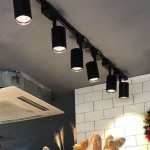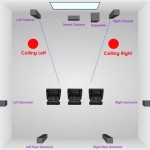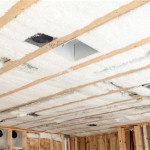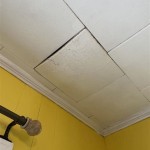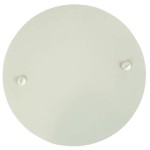Finished Basement With Drop Ceiling: A Comprehensive Guide
A finished basement can significantly expand the livable area of a home, offering spaces for recreation, relaxation, or even additional bedrooms. A drop ceiling, also known as a suspended ceiling, is a popular choice for finishing a basement ceiling due to its accessibility and ability to conceal utilities. Understanding the advantages, disadvantages, and considerations associated with drop ceilings is crucial for homeowners planning a basement renovation.
This article will provide a comprehensive guide to finished basements with drop ceilings, covering essential aspects such as planning, installation, materials, maintenance, and common issues.
Advantages of Drop Ceilings in Finished Basements
Drop ceilings offer several advantages that make them a favored choice for basement finishing. These benefits range from ease of installation to practical considerations such as accessibility to utilities.
One of the primary advantages is accessibility. A drop ceiling allows for easy access to the space above the ceiling, which typically houses essential utilities such as plumbing, electrical wiring, HVAC ductwork, and data cables. This accessibility is crucial for maintenance, repairs, and future upgrades. Unlike a drywall ceiling, where accessing these utilities requires cutting into the drywall, a drop ceiling enables homeowners or professionals to simply lift the tiles and gain immediate access.
Installation is relatively straightforward compared to other ceiling options. Drop ceilings consist of a grid of metal channels suspended from the existing ceiling joists. This grid provides support for lightweight ceiling tiles. The modular nature of the system makes it easier to install, even for homeowners with limited experience in home renovation. The installation process generally involves measuring and marking the perimeter of the room, installing the wall angles, suspending the main runners and cross tees, and then placing the ceiling tiles into the grid.
Drop ceilings also offer acoustic benefits. The ceiling tiles are available in various materials, including mineral fiber, fiberglass, and even metal, each offering different levels of sound absorption. This can be particularly beneficial in a basement environment, where noise from upstairs or from within the basement itself can be a concern. Selecting tiles with higher sound absorption coefficients can significantly reduce echo and reverberation, creating a more comfortable and quieter living space.
Furthermore, drop ceilings can improve the aesthetic appeal of a basement. They provide a clean, finished look that conceals unsightly joists, pipes, and wiring. A wide range of tile options are available in various colors, textures, and patterns, allowing homeowners to customize the appearance of their basement ceiling to match their décor. Lighting can also be easily integrated into a drop ceiling, with options for recessed lighting, surface-mounted fixtures, and even lighting integrated directly into the ceiling tiles.
Finally, drop ceilings are often more cost-effective than other ceiling options, such as drywall. The materials are typically less expensive, and the installation process is less labor-intensive, which can result in significant cost savings. This makes drop ceilings a budget-friendly option for homeowners looking to finish their basement without breaking the bank.
Important Considerations Before Installing a Drop Ceiling
While drop ceilings offer numerous advantages, it’s crucial to consider certain factors before proceeding with installation. These considerations include ceiling height, potential moisture issues, and local building codes.
Ceiling height is a critical factor. Drop ceilings reduce the overall ceiling height in a room, as they are suspended below the existing joists. Building codes often specify minimum ceiling height requirements for habitable spaces. It is essential to measure the existing ceiling height and calculate the amount of space that will be lost due to the drop ceiling. Generally, a minimum finished ceiling height of 7 feet is recommended. If the existing ceiling height is already low, a drop ceiling may not be a suitable option. In some cases, alternatives such as drywall directly attached to the joists or specialized low-profile drop ceiling systems may be considered.
Moisture is another significant concern in basements. Basements are often prone to dampness and moisture, which can lead to mold growth and damage to the ceiling. Before installing a drop ceiling, it is crucial to address any existing moisture issues, such as leaks or condensation. Waterproofing the foundation walls and installing a vapor barrier can help prevent moisture from entering the basement. Using moisture-resistant ceiling tiles can also help to mitigate the risk of mold growth. Regular inspection of the basement for signs of moisture is essential to ensure the longevity of the drop ceiling.
Local building codes should be consulted before beginning any basement renovation project. Building codes often specify requirements for ceiling height, fire resistance, and accessibility to utilities. It is important to obtain the necessary permits and ensure that the drop ceiling installation complies with all applicable codes. Failure to comply with building codes can result in fines or delays in the project.
Another consideration is the location of utilities. The placement of pipes, ductwork, and wiring can affect the layout and design of the drop ceiling. It is important to carefully plan the installation to avoid obstructing access to these utilities. In some cases, it may be necessary to relocate or modify existing utilities to accommodate the drop ceiling. Consulting with a qualified contractor can help to ensure that the installation is done safely and correctly.
Finally, consider the long-term maintenance of the drop ceiling. While drop ceilings are generally low-maintenance, they may require occasional cleaning or replacement of damaged tiles. Choosing durable, easy-to-clean ceiling tiles can help to reduce the maintenance burden. It is also important to regularly inspect the ceiling for signs of damage, such as water stains or sagging tiles.
Materials and Installation Process
Understanding the materials required and the installation process involved in creating a finished basement with a drop ceiling is crucial for a successful project. This knowledge allows homeowners to effectively plan and manage the renovation, ensuring that the outcome meets their expectations and needs.
The primary materials needed for a drop ceiling installation include the suspension grid components and the ceiling tiles. The suspension grid consists of wall angles, main runners, and cross tees. Wall angles are attached to the perimeter walls to provide support for the grid. Main runners are the primary support beams that run lengthwise across the room, suspended from the ceiling joists using wires. Cross tees connect the main runners, forming a grid pattern. The ceiling tiles rest within this grid. The tiles come in various materials, including mineral fiber, fiberglass, and metal, each with different properties in terms of sound absorption, moisture resistance, and aesthetics.
The installation process typically involves several steps. First, the perimeter of the room is measured and marked to determine the location of the wall angles. The wall angles are then attached to the walls using fasteners. Next, the location of the main runners is determined, and wires are attached to the ceiling joists to suspend the runners. The main runners are leveled and secured to the wires. The cross tees are then installed, connecting the main runners and forming the grid. Finally, the ceiling tiles are placed into the grid, completing the installation. It is important to follow the manufacturer's instructions and use appropriate safety precautions during the installation process.
Specialized tools are required for drop ceiling installation. These tools include a measuring tape, level, chalk line, drill, wire cutters, and safety glasses. A laser level can be particularly helpful for ensuring that the main runners are level. A tile cutter may also be necessary for cutting ceiling tiles to fit around obstructions or at the edges of the room. It is important to use the correct tools and equipment to ensure that the installation is done safely and accurately.
Integrating lighting into the drop ceiling is another important consideration. Recessed lighting fixtures, also known as can lights, are commonly used in drop ceilings. These fixtures are installed within the ceiling tiles and provide a clean, modern look. Surface-mounted fixtures can also be used, although they may be less aesthetically appealing. Some ceiling tiles even have integrated lighting, which can simplify the installation process and provide a seamless appearance. It is important to ensure that all electrical wiring is done safely and in compliance with local building codes. Consulting with a qualified electrician is recommended.
Proper planning is essential for a successful drop ceiling installation. Before beginning the project, it is important to create a detailed plan that includes the layout of the grid, the location of lighting fixtures, and any other necessary components. Accurate measurements are crucial to ensure that the grid is properly aligned and that the ceiling tiles fit correctly. It is also important to consider the location of utilities, such as pipes and ductwork, and to plan the installation accordingly. A well-planned project will result in a finished basement with a drop ceiling that is both functional and aesthetically pleasing.

Basement Ceiling Tiles Drop Ceilings

Basement Drop Ceiling Tiles Total Finishing

Basement Ceiling Ideas Installation

Finishing Basement 11 Diy Accessible Ceiling Drop Idea Cheap Easy Fast Looks Great Youtube

Stunning Suspended Ceiling You Can Diy Home With Krissy

Basement Drop Ceiling Tiles Finishing

Finish Your Basement With Drop Ceiling Tiles Decorative Inc Store

A Drop Ceiling That Looks Better Than Drywall How To Install In Basement Diy

Diy Coffered Ceilings With Moveable Panels Renovation Semi Pros

How To Install A Drop Ceiling Yourself


